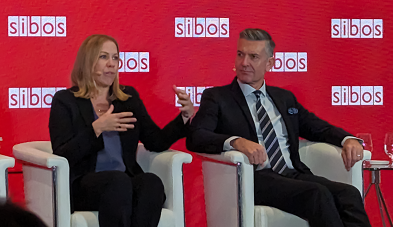Over the last few years, tokenization has been a focus for many financial firms. Yet despite prominent platform launches, wide-scale adoption has yet to be achieved. Jennifer Peve, DTCC Managing Director, Global Head of Strategy and Innovation, spoke about the challenges facing the future of tokenization with a panel of industry experts at Sibos 2023.
Related: Advancing the Digital Asset Era, Together
Regulatory Disparity
Regulatory challenges loom large in the U.S while other regions have seemingly embraced tokenization. Peve noted that in the U.S., firms such as DTCC have shifted their focus toward demonstrating regulatory compliance examining the technical, legal and business risks and controls for any given use case. As a financial market infrastructure, DTCC leverages a taxonomy of risk and controls and through pilots executed in collaboration with key stakeholders seeks to validate the control framework and demonstrate how the use case can achieve regulatory compliance.
In the EU, the situation among markets varies by country. Transparent regulatory regimes have helped advance progress in certain jurisdictions that have embraced token-based infrastructure. The UK government has launched a permanent security sandbox to allow developers a secure setting to test and evaluate products. And Switzerland may have the most advanced legal framework for digital securities. In 2022, the country was the home to a UBS-launched 375 million Swiss franc digital bond that is publicly traded and settles on both blockchain-based and traditional exchanges.
In an audience poll asking about which region was at the forefront of tokenization, the resounding answer was APAC, thanks to regulatory regimes that have supported growth. Not only is the area the most advanced in terms of central bank digital currency (CBDC) pilots and launches, but it is also leading the way in projects such as trials on tokenized asset network models by Singapore’s national bank, the Monetary Authority of Singapore (MAS). In fact, MAS has directly contributed to the funding of tokenization projects nationally and for global initiatives.
 DTCC's Jen Peve (I) discusses tokenization at Sibos with fellow panelist David Newns, Head SIX Digital Exchange, SIX
DTCC's Jen Peve (I) discusses tokenization at Sibos with fellow panelist David Newns, Head SIX Digital Exchange, SIX
Pillars to Industry Adoption
While there are several challenges to industry adoption of DLT/digital asset solutions, when the audience was asked what was needed to drive further adoption, regulatory issues were at the forefront. In order to achieve scale, panelists noted three key points:
Regulatory framework - The regions with the most transparent regimes — those with defined rules around the securitization of assets — have made the largest advances.
Common taxonomy - What is a tokenized asset, and what does it include? A lack of common definitions creates confusion as well as being a deterrent to adoption.
Standardization - Protocols and innovation for the underlying technologies, consistency in standards is needed to reduce friction. It’s not just about the technology standards, there are legal, resiliency, privacy, smart contract, and network components that if we can develop a consistency in approach, we will be benefit from efficiency, scale and resiliency.
Peve noted that industry engagement over tokenized assets has returned despite the challenging regulatory environment. “We’re seeing a return to collaboration to think through some of the challenges, but instead of focusing on just one capability, market participants are looking at the full end-to-end cycle. Borderless collaboration will bring jurisdictions together. There’s lots of exciting things happening in Europe and Asia that can inform how we move forward in the U.S.”